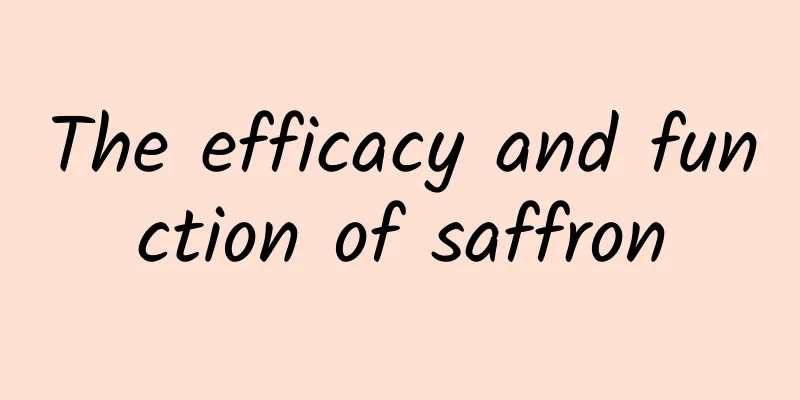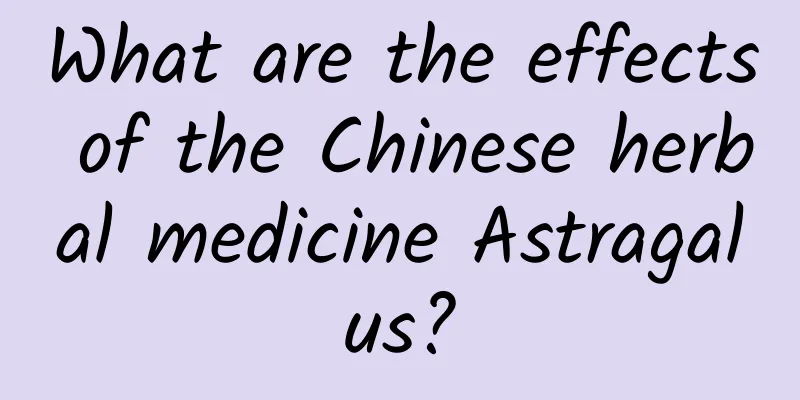The efficacy and function of saffron

|
Many people are not very clear about saffron, so when choosing saffron, you need to understand it so that you can feel at ease when eating it, which is beneficial for disease treatment. 【English name】 Saffron [Other names] Saffron, saffron [Source] It is the stigma of Crocus sativus L., a plant of the Iridaceae family. From October to mid-to-late November, pick the flowers on sunny mornings, remove the stigmas indoors, and dry them in the sun or in a low-temperature oven. [Original form] Perennial herb. The bulb is oblate, of varying sizes, 0.5 to 10 cm in diameter, and covered with brown membranous scales. 2 to 14 clusters grow from the bulb, each cluster has 2 to 13 leaves, with 3 to 5 broad black scales at the base. The leaves are linear, 15 to 35 cm long, 2 to 4 mm wide, with curled edges and fine hairs. Flowers are terminal; 6 tepals, obovate, lavender, tube is tubular; 3 stamens, anther base is arrow-shaped; ovary is inferior, 3-chambered, style is slender, yellow, 3 stigmas, expanded and funnel-shaped, extending out of the tepals tube and drooping, dark red. Capsule oblong with three obtuse edges. Seeds numerous, spherical. The flowering period is from October to November. [Habitat distribution] It has been introduced and cultivated in Beijing, Shanghai, Zhejiang, Jiangsu and other places. [Properties] The stigma is linear, about 3 cm long, dark red, wider and slightly flatter at the top, with irregular serrations on the top edge, and a small section of yellow style remaining at the bottom. It is light, soft, without any oily luster, and becomes brittle and easily breaks after drying. It has a peculiar, slightly irritating smell and a slightly bitter taste. It is mild in nature and sweet in taste. [Chemical composition] Contains crocin-1, 2, 3, 4 (crocin-1~4), picrocrocin, crocetin dimethyl ester, α-crocetin, safranal, volatile oil, etc. 【Nature and flavor】 Neutral in nature, sweet in taste. [Functions and indications] Promote blood circulation and remove blood stasis, cool blood and detoxify, relieve depression and calm the mind. It is used for amenorrhea, postpartum blood stasis, rashes caused by warm toxins, depression, fullness of stomach and stomach, palpitations and madness. 【Excerpt】 《*Dictionary》 [Source] The name saffron first appeared in "Pinhui Jingyao". Having said so much, we can see that saffron has many functions. It can also be used as medicine to treat diseases. You might as well know more about these, it will be helpful in your life. |
<<: The efficacy and function of stinky jasmine leaves
>>: The effects and functions of stinky plums
Recommend
How about snake venom mask?
Nowadays, facial masks are the most indispensable...
What is the difference between Astragalus and Roasted Astragalus?
Almost everyone knows about Astragalus, but few p...
What are the medicinal values of Rehmannia glutinosa?
Rehmannia glutinosa is a Chinese herbal medicine ...
The Olympics are over, but the Olympic melons are not over yet. What the hell is "the medals are rusted"?
Olympic medals are rusty! The Paris Olympics is o...
Can I still drink expired white tea?
White tea is also a kind of tea. It can be used t...
The efficacy and function of coix root
As people's research on traditional Chinese m...
The medicine used to treat the prince in ancient times was so magical
Many Chinese medicines have legendary histories a...
The efficacy and function of Maydens densiflora
Medinia densiflora is a Chinese medicine that is ...
Lighting the Olympic flame, generating electricity in space...how many surprises are there in solar energy that you don't know about?
Review expert: Qian Hang, aerospace science exper...
The efficacy and function of yellow fruit eggplant
Traditional Chinese medicine culture is profound ...
Who is the king of volcanoes in China?
January 15, 2022 Tonga, a South Pacific island na...
Tobacco is sweet? Diabetes warning!
Author: Xiao Dan, Director of the Department of T...
What medicine should I take for low blood pressure?
Hypotension is a very common phenomenon in normal...
Composition of Daotan Decoction
The ingredients of Daotan Decoction are Pinellia,...
The efficacy and function of fish eye grass root
Fisheye grass root is very familiar to everyone. ...







![[Creative Cultivation Program] Is there any scientific basis for the claim that spanking can improve IQ?](/upload/images/67f0e6d273c21.webp)

